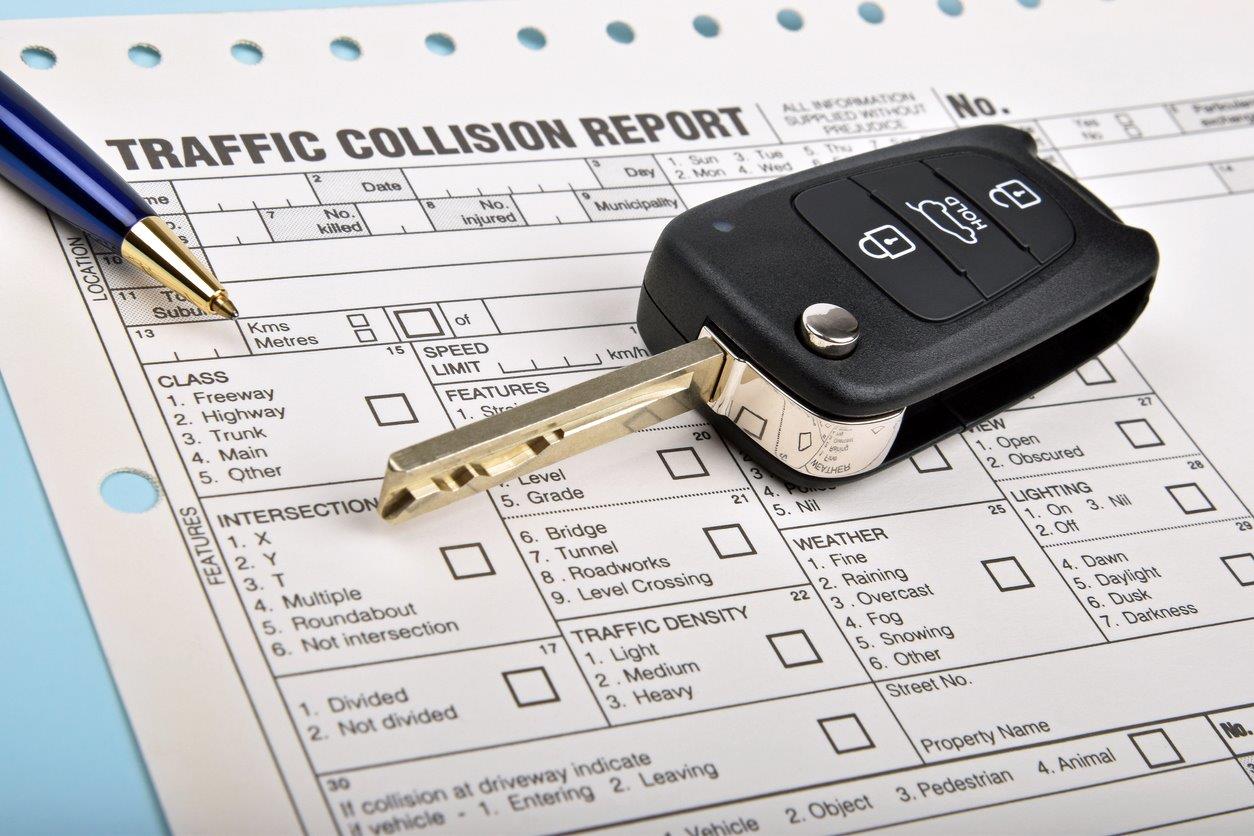If you have been involved in a motor vehicle collision often you have a lot of information coming at you at the scene of the accident. Usually, you will speak to the other driver, the police officer who responds to the scene and maybe even witnesses who saw what happened. In addition, you may have more pressing concerns regarding your health or possible injuries, the state of your vehicle or even how will you be able to get to work or pick up your children with a vehicle that is not badly damaged. Because of all these issues, important information can and often is either forgotten or not collected after the traumatic experience you just went though.
Luckily, much of the important information you may need is contained in the Traffic Crash Report that is usually made when an officer reports to the scene of the collision. Crash Report’s often contain important information such as the name of the other driver involved in the collision, his or her insurance company information, and even the names of any potential witnesses. Crash Reports are compiled by the Ohio Department of Public Safety and can be found by visiting:
https://ohtrafficdata.dps.ohio.gov/crashretrieval
Crash Reports will typically appear on the website within a week or so of your collision, but it may take longer depending on the complexity or severity of the collision.
Once you are at the Crash Report website there are a couple ways of finding your crash report. The easiest way to find your report is to know the “Crash Number”. Often a responding officer will write this number down for you on a card or on any exchange of information sheets that are given to you at the scene.
If you do not have the crash report number, you can use the advanced search option where you can enter the following information:
- Date of Crash
- County in which the crash occurred
- The law enforcement agency that completed the report (Columbus Police, State Trooper, etc.)
- Your last name
So, what is contained in a standard crash report? Usually, the Crash Report will contain the following important information:
First page of Crash Report contains general information regarding the collision and includes the following:
- The Crash Report Number typically found in the top right of the report’s first page
- A description of where the collision occurred
- The date and time of the collision
- A diagram of the collision
- A narrative of how the collision occurred according to the drivers/witnesses of the collision
- The name or the responding officer and his or her reporting agency
The next few pages of the Crash Report contain information regarding Units or Vehicles involved in the collision and includes the following:
- The vehicle’s owner’s information, including the owner’s address
- The year make and model of the vehicle
- License plate number
- Owner’s insurance information
- Diagram of the vehicle showing where the damage occurred and the severity of said damage
- The Sequence of Events that lead to the collision
- The traffic conditions at the time of the collision
- The vehicles speed at the time of the collision and the posted speed for the area.
After the Unit/Vehicle information comes the Motorist/Non-Motorist pages and includes the following:
- The name, address, date of birth, and gender of the drivers or the vehicles
- If any person suffered any injuries
- If the injured person was using a seatbelt and/or other safety equipment
- If an injured person was transported by from the scene of the collision, what EMS Agency transported that person, and what Medical Facility treated the injured person
- The operator license number of any drivers involved in the collision
- If there were any restrictions on the drivers license of any of the drivers
- If the officer issued a ticket or a traffic offense to one or more of the drivers and the name of the offense charged.
- If alcohol or drug were suspected as a cause of the collision and if an alcohol or drug test was performed on any of the drivers
The final pages of the Crash Report list the name(s) address(es) and other important information regarding any occupants of the vehicles and/or witnesses to the collision. Sometimes, if the drivers of the vehicles offer different accounts of how the collision occurred, there will written statements added to the end of the Crash Report from the drivers, occupants, or potential witnesses.
If you do not have access to the internet you can also mail your request to the law enforcement agency that filed the report. In the letter, you will need to include both your name and address as well as the accident date and location. Additionally, there may be a cost involved for printing the actual report, so make sure that you call the reporting agency before mailing in your request. If neither online or mail works with your schedule, you may always go to the law enforcement agency that issued the report and request a copy of the report in person.
In conclusion, traffic crash reports are a vital piece of information when you are gathering evidence regarding your collision. This information can be used to strengthen your case and help you in the event that you need to provide additional information to the insurance adjuster to prove the other driver’s liability. However, if you feel that you need representation, the crash report will be one of the first documents that your attorney will acquire when they are building your case. Remember, in the event of a collision it is important that you gather as much information as possible to protect yourself and obtaining your traffic crash report is one of the best ways to do that.

